Lush foliage and exotic flowers are the two most important ingredients landscape designers use to create tropical ambience in the garden. I would argue that luscious fruits and exotic herbs should — or at least could — play a part, as well.
Creating an edible tropical oasis in your backyard is simply a matter of replacing ornamental varieties with edible stand-ins — swapping out those plumerias for papayas and substituting bananas for your Brugmansias. Tropical edibles are often just as beautiful as their ornamental counterparts and allow you to experience the garden not just through its sights, smells and sounds, but also through your taste buds.
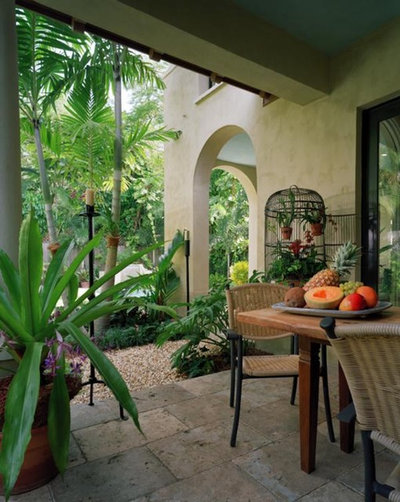
orlando comas, landscape architect.
Many common tropical plants are actually edibles in disguise. Split-leaf philodendron (
Monstera deliciosa, USDA zones 10 to 11; find your zone), for example (behind the chair in this photo), produces a strange edible fruit, while elephant’s ear (
Colocasia esculenta,
zones 8 to 10) has an edible root. The fruit of split-leaf philodendron is toxic if not eaten correctly. It doesn’t need to be cooked, but the outer scales are highly irritating to the digestive system if ingested and must be removed.
Getting tropicals to produce ripe fruit in the U.S. is a challenge outside of Hawaii, California and southern Florida, but gardeners in temperate climates can get in on the fun by using hardy plants that have a tropical vibe. Growing in pots and bringing those tender edible species indoors for winter is also an option.
Of course, the most important part of an edible tropical garden, besides the plants, is an open-air patio where you can enjoy the fruits of your labor.
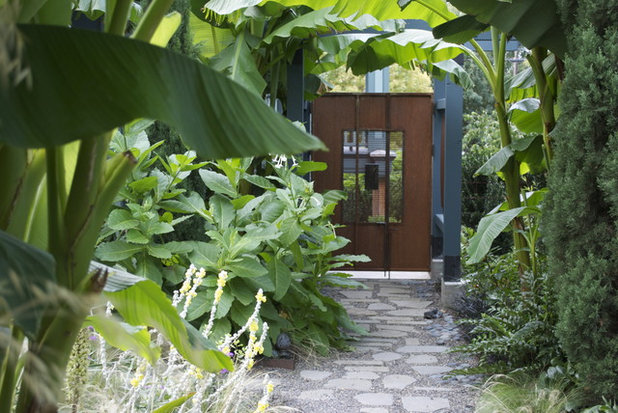
Lilyvilla Gardens
Blend tropical edibles seamlessly among ornamentals. There is no reason to segregate the two, and mixing edibles and ornamentals will ensure that the tropical look is not lost. Here, banana trees create a low canopy over ferns and Nicotianas, making a short walk from the front door to the street feel like a stroll through paradise. Tropical gardens are quite unlike a typical edible garden with sparse beds and straight lines — they overflow with multiple layers of vegetation, and organic shapes are prioritized over any sense of formality.
See more ways to blend ornamentals and edibles in garden beds
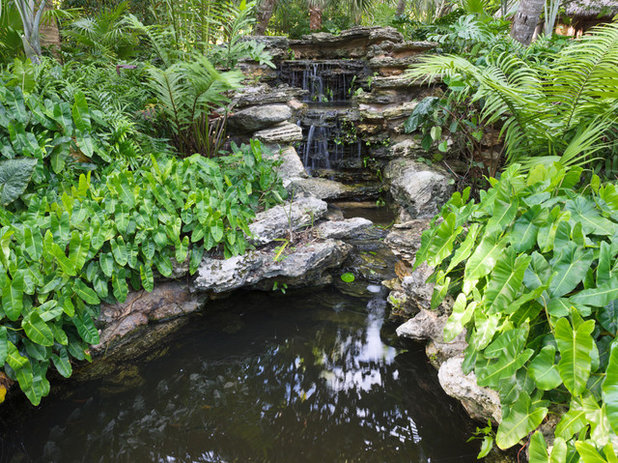
Raymond Jungles, Inc.
Water is prominent in tropical gardens, whether in the lushness of the plants or in an actual water feature.
The beds on either side of this water feature are filled with taro, a type of elephant’s ear with a starchy root that is a staple in the Polynesian diet. Taro will grow in constantly wet soil or directly in water up to 12 inches deep. Hawaiians pound the root into a paste, which is then fermented to make a dish called
poi. It’s important to be aware, however, that taro roots cannot be consumed raw — they are highly toxic in this form.
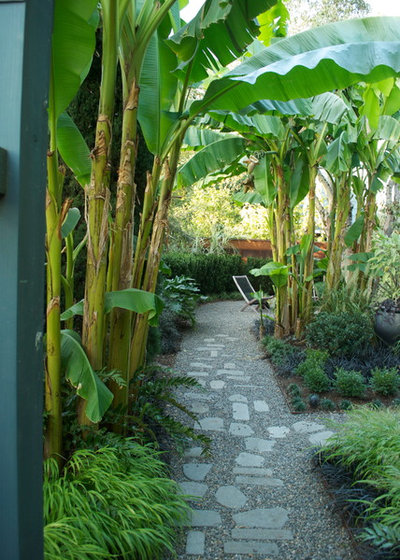
Lilyvilla Gardens
Focus on tropical fruit trees (if you live in the right climate). The world of tropical fruits is enormous. Bringing their ambrosia into your garden will create an environment like no other.
Bananas grow in large clumps like enormous broad-leaf grasses and have an absolutely Jurassic feel about them. They thrive in moist, highly fertile soil and need full sun to produce fruit. Fruiting varieties of banana need frost-free temperatures year-round for their crop to ripen, however.
See how to grow a banana tree
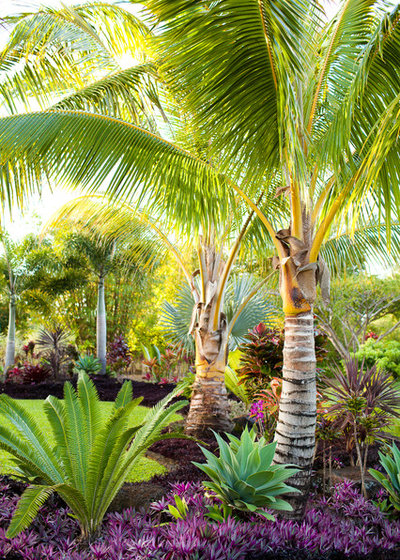
Designscape Inc.
Everyone knows about coco and date palms, but there are a surprising number of other palm trees that produce something to eat, including several that are commonly used as ornamentals in tropical gardens.
- Jelly palm (Butia capitata, zones 8 to 11): Also known as pindo palm, jelly palm is hardy down to 10 degrees Fahrenheit and sports orange fruits that resemble apricots
- Guadalupe palm (Brahea edulis, zones 10 to 11): Has fruit similar to that of jelly palms but is hardy only to 30 degrees Fahrenheit
- Chilean wine palm (Jubaea chilensis, zones 8 to 10): Also sports an apricot-like fruit and is hardy to about 10 degrees Fahrenheit
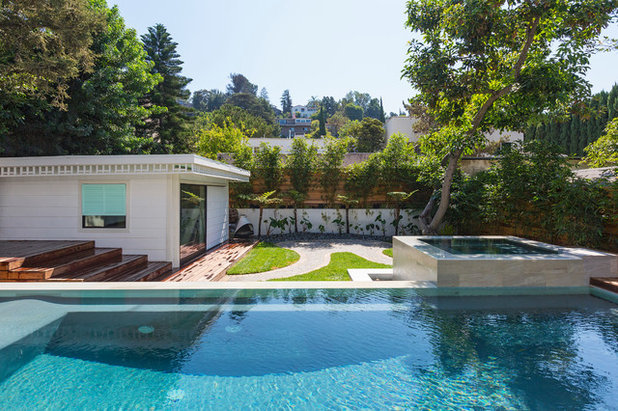
XANADU GROUP
This landscape designer was lucky enough to have a mature avocado tree to use as a focal point in the garden. Avocados are hardy to about 25 degrees Fahrenheit and grow into massive shade trees. They are one of the healthiest fruits you can grow.
Other edible tropical trees to consider for shade and ornamental value include papayas, mangoes, cherimoyas, lychees and macadamia nuts.
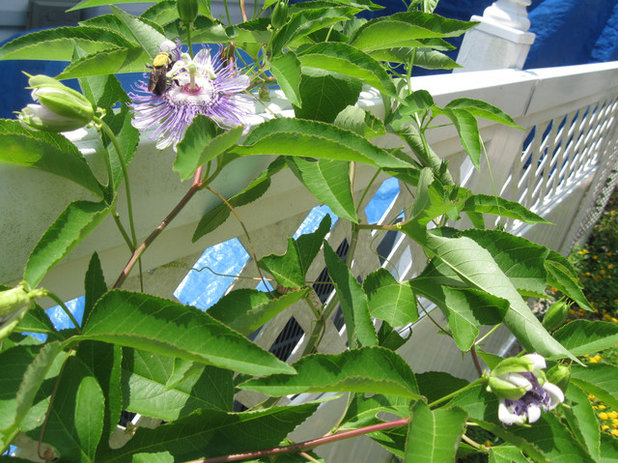
Ginny Stibolt
Plant edible vines to extend the tropical experience in a vertical dimension. Exotic vines dripping down from above are one of the classic designer tricks for creating tropical ambience. Passion vine (
Passiflora spp) is the most common edible tropical vine. The flowers are out of this world, but if you choose an edible variety, such as blue crown passion flower (
Passiflora caerulea,
zones 8 to 11), the flowers will develop into fruits that are equally exotic.
Most edible passion vines are damaged when temperatures dip below freezing, but eastern U.S. native maypop (
Passiflora incarnata,
zones 7 to 10), shown here growing on a poolside fence, survives temperatures all the way down to -25 degrees Fahrenheit. The fruit has a similar flavor to its tropical cousins, and the leaves are used to make a relaxing tea.
Akebia, an edible temperate climate vine with an odd, sausage-like fruit, will blend in effortlessly with tropical plants. Even the common nasturtium (a source of edible flowers) can pull off the tropical look, thanks to its lush leaves and bright-colored blossoms.
See how to grow passion vine
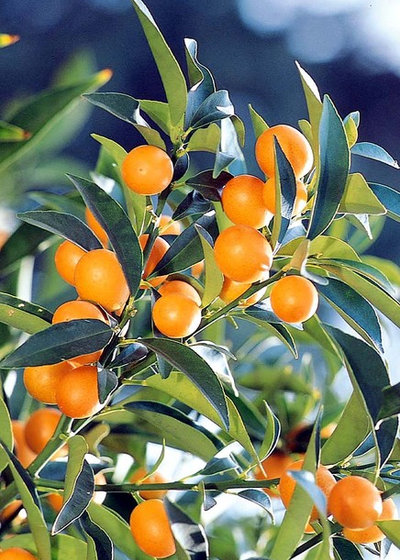
Monrovia
Plant tropical shrubs in containers and bring them indoors when freezing weather threatens. Dwarf citrus plants grow as bushes rather than trees and are small enough to grow in a pot or planter. Meyer lemons and kumquats (pictured here) are both hardy down to 18 degrees Fahrenheit, making them the most cold-tolerant citrus. However, any citrus that has fruit on it when winter approaches will continue to ripen if placed in a sunny spot indoors. The fruit will take longer to ripen indoors, but if it’s not ready by the time spring rolls around, just take it back outside to continue.
Several other tropicals can be kept as bushes and grown in pots, including the many types of guavas that are available. Pineapple guavas are among the easiest to grow and also produce an exotic-looking edible flower. (They are also the hardiest, surviving down to 10 degrees Fahrenheit). Strawberry guavas, lemon guavas and even the larger white guavas will also produce fruit in container culture.
See how to grow kumquats
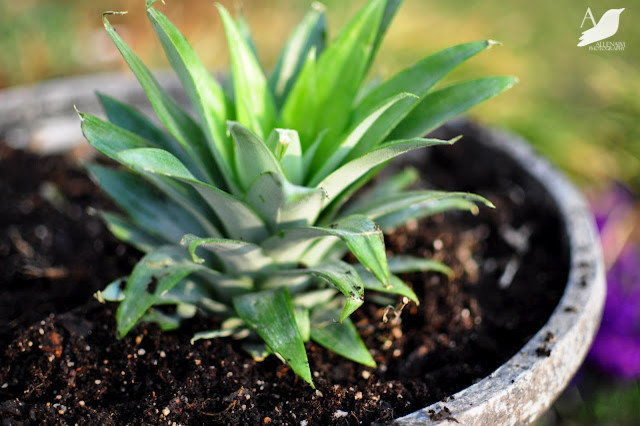
Amy Renea
Don’t forget the small guys. The smallest fruiting tropical plant is also a unique one. Pineapples are a type of bromeliad; the prehistoric bromeliad plant group includes many of the air plants that tropical garden designers like to grow on old tree trunks. Pineapples are a bromeliad that prefers to grow in the ground, but they look equally prehistoric.
They eventually grow several feet tall and wide, but it’s possible to start a pineapple plant, like this one, by cutting off the top of one from the store and sticking it in a pot of loose, fertile soil. If kept in a warm, humid environment, it should start forming roots within a few weeks and can be overwintered in a sunny window until it matures into a fruit-filled specimen.
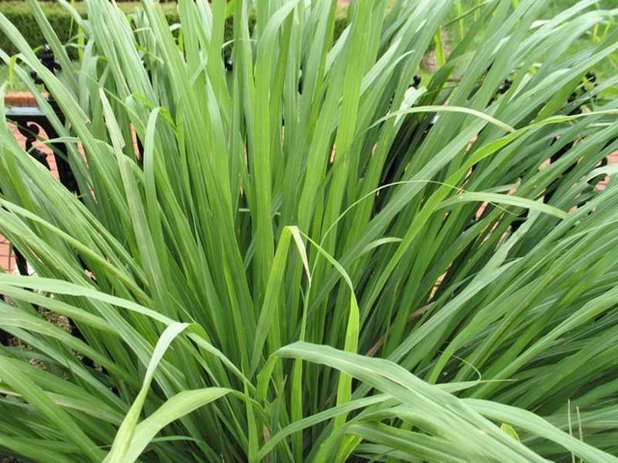
Missouri Botanical Garden
Lemongrass (
Cymbopogon citratus) is the easiest tropical herb to grow outside of the tropics. It grows, well, like grass, and fills up the garden with its heady scent. Grow lemongrass as an annual or plant it in a pot and bring it indoors for winter to keep it going year-round.
See how to grow lemongrass
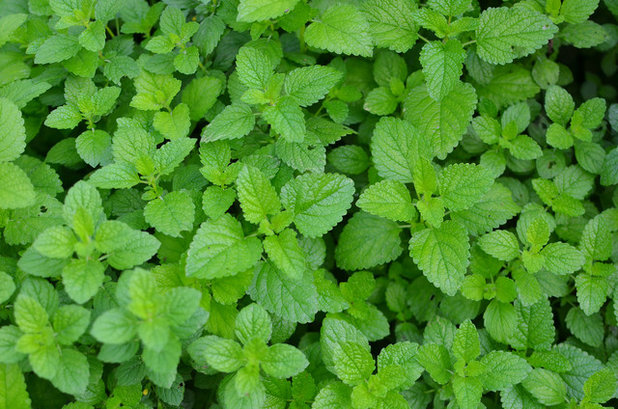
Amy Renea
Mints are a good group of plants to consider if you’re looking for a cold-hardy stand-in for a tropical plant scheme. Mints love water, grow in the shade and have a naturally lush look that makes them a great ground cover or filler around larger tropical plants. Plus, you can harvest them for your tropical-themed beverages.
See how to grow mint
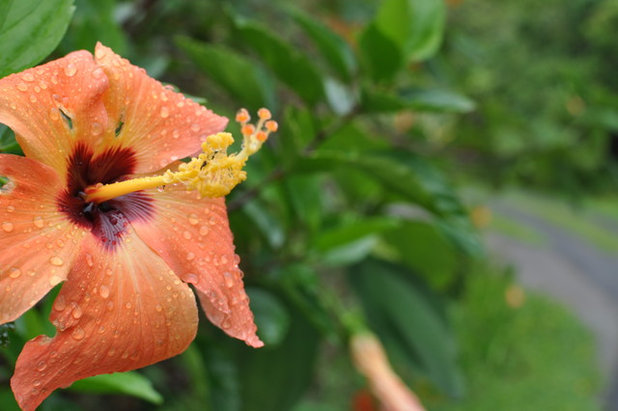
Amy Renea
Top off the edibles with a floral garnish. Hibiscus (shown here) is one of the most iconic tropical flowers. It also happens to be edible. Both the flowers and leaves are used to make a refreshing iced tea. The flowers, which come in an array of vibrant colors, are also a nice edible garnish for a meal enjoyed out in your tropical oasis.





